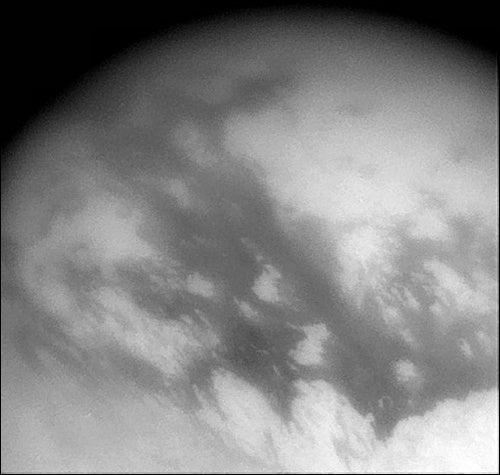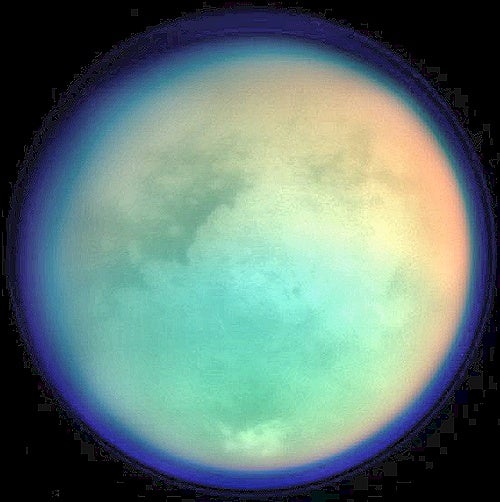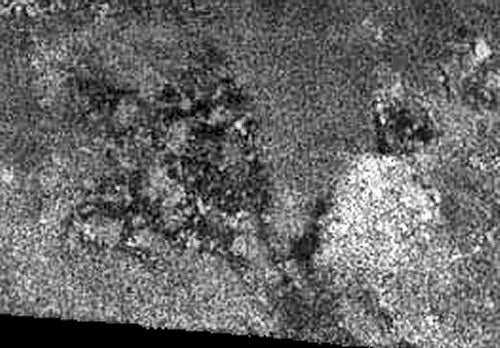On October 26, the Cassini spacecraft made its first close pass by Saturn’s planet-size moon, Titan. After a 7-year journey — the last 4 months of which were spent in orbit around Saturn — Cassini plunged within 750 miles of the world’s surface. It snapped hundreds of photographs, made its first radar observations, and even scooped up traces of the moon’s outer atmosphere.
Although Titan has begun to yield its closely held secrets, planetary scientists have a long way to go before understanding the world. “We are still mystified,” confesses Carolyn Porco of Space Science Institute, leader of the imaging team. Until this week, Titan had the largest unexplored surface in the solar system, and it will take more than a couple of days to understand all the new observations.
The first close-up images show a surface with lots of contrast and a complex interplay between the bright and dark expanses. To the human eye, the white areas appear cloud-like, but that’s only because we’re conditioned to view diffuse, whitish features that way. Both the bright and dark areas are definitely surface features. Exactly what kinds of features, however, remain a mystery. The Sun lay directly behind the spacecraft when the images were taken, so there are no shadows to help determine what’s high and what’s low.
Numerous bright streaks also mark the surface. Most of the streaks parallel Titan’s equator, and imaging team member Alfred McEwen of the University of Arizona suspects that hints at an origin in the moon’s atmospheric circulation. Similar-looking streaks exist on Mars, and those definitely arise from winds blowing that planet’s ubiquitous dust. But it’s still too early to say whether Titan’s streaks may have formed the same way.
In any case, the surface appears young: No evidence has turned up showing any impact craters. Saturn’s other moons bear innumerable impact scars, so the lack of them on Titan implies some process has removed them. Some form of icy volcanism could do the trick, although a rain of organic material could work as well. Infrared observations show the surface is coated with organic material, presumably deposited over the eons as organic compounds rain — or snow — out of the atmosphere.
is centered in the northern hemisphere of Titan, over a region that has not yet been imaged optically (50° N, 54° W). Mission scientists think brighter areas correspond to rougher terrain and that darker areas are smoother. The dark area in this view, The darker regions in this view, which the Cassini team nicknamed “Si-Si the Cat” when a team member’s daughter pointed out its feline appearance, is consistent with a very smooth or highly absorbing solid, but could also be liquid.
Another Cassini instrument, the Ion and Neutral Mass Spectrometer (INMS), scooped up molecules lurking at the outer edge of Titan’s atmosphere. It found a rich mix of organic molecules, including methane, benzene, and diacetylene, along with the dominant atmospheric constituent, nitrogen. In another intriguing finding, the INMS team measured the ratio of different nitrogen isotopes, from which they estimate that Titan has lost perhaps three-quarters of its atmosphere over the age of the solar system.
The atmosphere will be of prime importance to the Huygens probe, which in January will parachute to Titan’s surface, analyzing the air throughout its journey. The imaging team snapped pictures of the landing site and it appears to lie near the intersection of some bright and dark regions. Planetary scientists couldn’t be happier with the coincidence.












